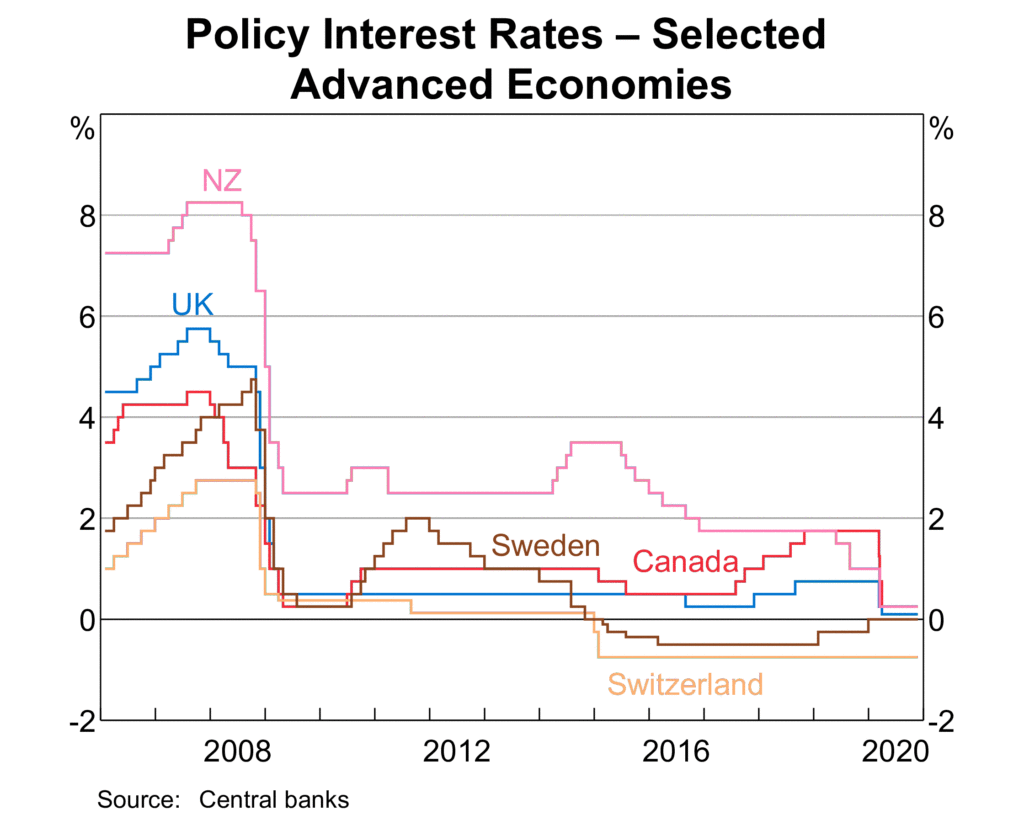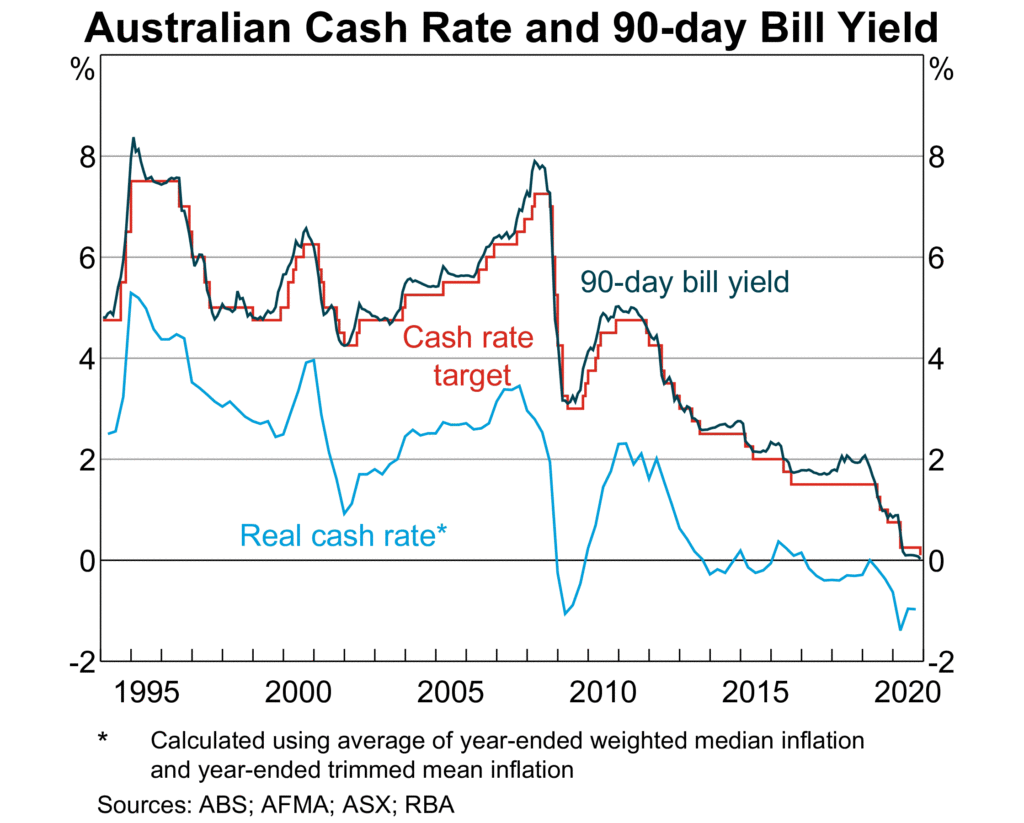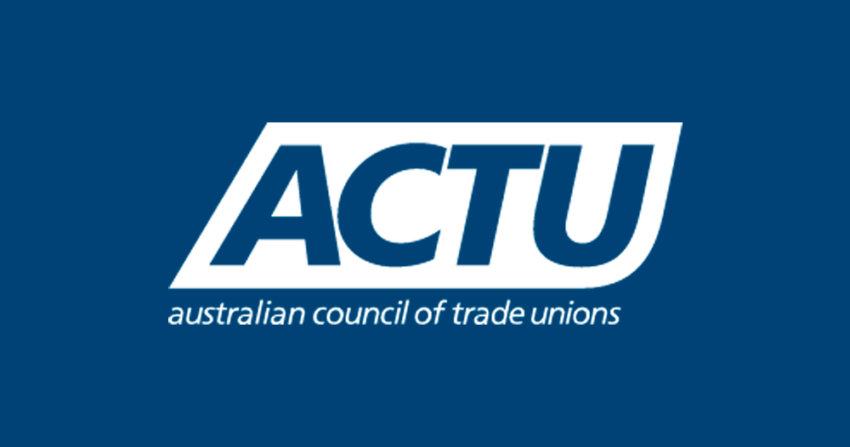Historically, Australians looking for stable investments had the ability to invest in term deposits and earn an income yield that often sufficient preserving capital and even building wealth. Today, term deposits stand at close to zero and are therefore unlikely to provide sufficient income or even preserve capital after accounting for inflation. How did this happen? And what should investors do now?
To understand how we got here, it is helpful to review the role that the Reserve Bank of Australia (RBA) plays in interest rates and its relationship to the Australian economy. The goal of the (RBA) is to contribute to the stability of the currency, full employment and the economic prosperity and welfare of the Australian people. They mainly do this through setting monetary policy, which means using the interest rate to influence other rates and ultimately the economy at large.
The configuration of Australia’s economy since the global financial crisis (GFC) in 2007/08 has been almost a perfect storm of conditions that have caused the RBA to push interest rates lower. Unemployment has been low, by world standards, but wages growth has also been low. Static income levels have been tolerable because inflation has been low and the economy, overall, has grown, partly through the resources trade and partly from immigration. On top of this, interest rates overseas have generally declined, and Australia’s competitiveness requires the RBA at least consider what happens abroad.

Considering all of this, it is not surprising that the RBA has employed a series of interest rate cuts in an effort to kick the economy up a level. By reducing interest rates, the RBA’s intent is to incentivise less saving and more spending and investment because spending and investment creates jobs in a way that savings don’t. Lower interest rates mean companies and individuals save less (because rates are low) and spend more. Investment by companies, even if they borrow (again, rates are low!) would lead to more jobs, and hopefully by extension to better paying jobs. At the same time, low rates would support spending by homeowners (both from having more disposable income from lower mortgage payments, and the ‘wealth effect’ through increasing house prices) and support company share prices. The hope with higher share prices is that it acts as a stimulant to corporate investment.
These interest rates cuts have brought us to a stage where the interest rate on savings accounts and term deposits is pretty close to zero. This is because the interest rates banks offer on term deposits is to a great degree indexed to the RBA’s cash rate. is often a bit higher than the RBA’s cash rate target.
Since a post-GFC high of 4.75% in late 2010, the cash rate has moved lower and lower, hitting 0.75% just before Covid. Since then, a series of emergency cuts culminating on Melbourne Cup day, 2019 have seen the target hitting an all-time low of 0.10%. The commentary from the RBA has been that these low rates are likely to persist for at least 3 years. The implication of this is that, unlike in the past, you will often not be able to get a higher rate just by investing in a longer dated term deposit.

There’s an old saying that cash is king; with term deposits at all time lows, investors might be forgiven for asking if this is still true? The answer is that it depends. On the one hand, your term deposit is an asset that is not going to fluctuate in value like shares. Because of this, it’s likely that keeping some of your money in term deposits and savings accounts is a good idea, especially if you think you’ll need the money in the short term. On the other hand, if you aren’t going to need access to it in the next few years, and you can accept some ups and downs, it may be worth considering an investment in assets that are more likely to appreciate in value, like shares.
At ifsinvest we have a range of investments which may be suitable for you. You can visit our website and consider if any of our investment options suit your needs or, if you’re an industry fund member, your fund may have a financial planner you can speak to about us.
Disclaimer: Ifsinvest is a division of Legg Mason Asset Management Australia Limited (Legg Mason Australia), ABN 76 004 835 849, AFSL No. 240827. Legg Mason Australia is part of Franklin Resources, Inc. Before making an investment decision you should read the Product Disclosure Statement (PDS) for the Fund carefully and you need to consider, with or without the assistance of a financial advisor, whether such an investment is appropriate in light of your particular investment needs, objectives and financial circumstances.





SHARE:
Term Deposits Are Near Zero – How Did That Happen & What To Do Now?